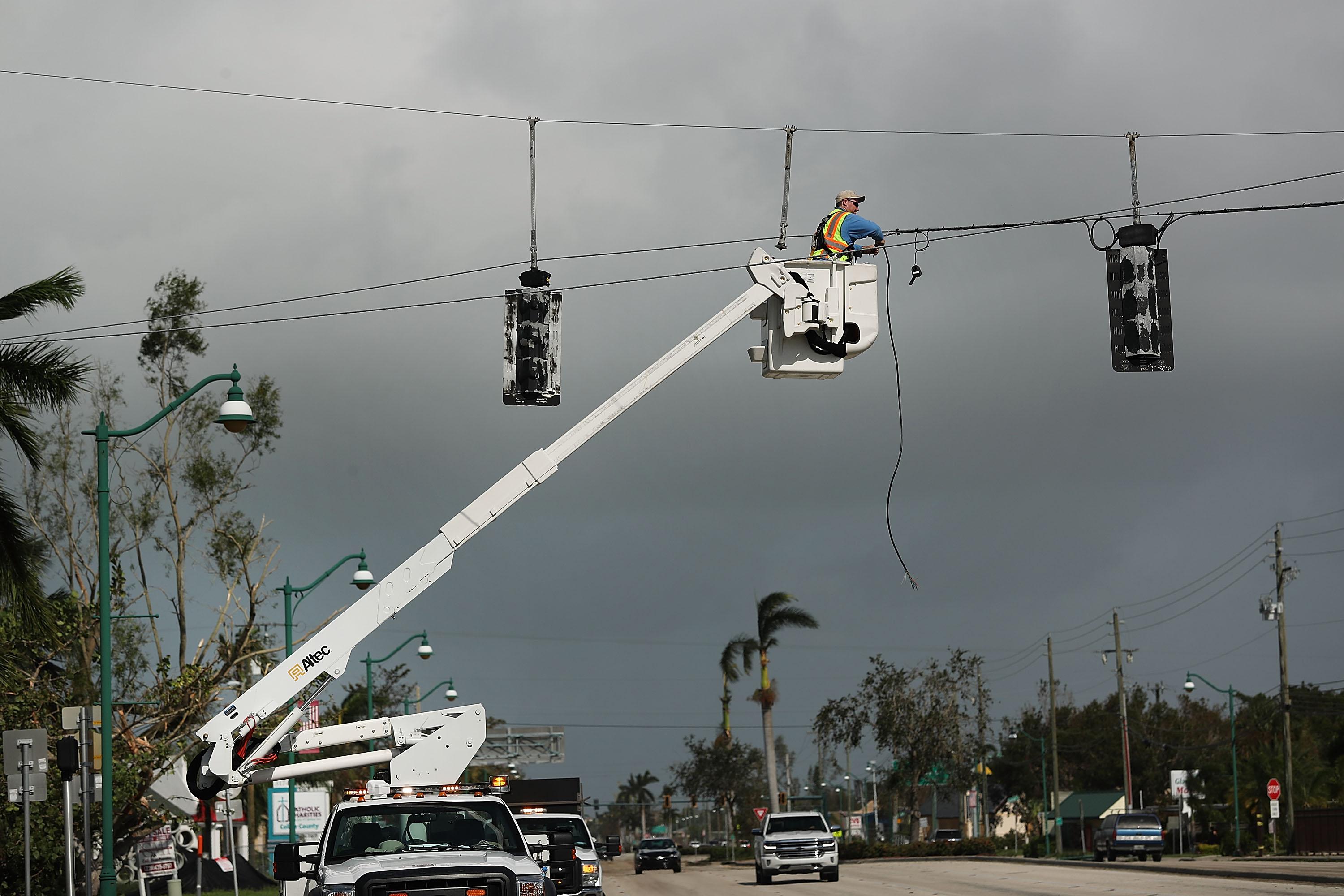Reports are rolling in that Florida may have narrowly evaded the worst-case scenario with Hurricane Irma, as many cities were not directly hit. Fatality counts in the state have been remarkably low thus far. While the value of avoiding human loss cannot be overstated, a preliminary assessment of Florida’s power grid reveals Irma’s true destructive power.
As Alexis C. Madrigal points out in the Atlantic, Florida’s electricity infrastructure suffered critical damage. Irma knocked out power for more than half the state. Florida officials estimated 6.7 million households and businesses suffered power loss. The state’s largest electric utility provider, Florida Power & Light, reported an unprecedented 5 million outages. The company has been working furiously to restore connections, some of which have been lost multiple times.
When the storm subsides, FPL will face another grueling undertaking: the wholesale reconstruction of its state-of-the-art smart grid along Florida’s west coast. The process will require several weeks of dangerous restorations of power plants, substations, and transmission lines. As FPL spokesman Rob Gould told ABC, “This is going to be a very, very lengthy restoration, arguably the longest restoration and most complex in U.S. history.”
In 2013, FPL finished installing what was likely the most advanced energy grid in the country, a project for which the company had invested almost $3 billion. The U.S. Department of Energy awarded FPL $200 million for the grid from 2009 Recovery Act funds. Thanks to the resulting smart technologies in the system, such as sophisticated sensors and automated switches, the Florida utility was able to prevent some outages and mitigate others during Hurricanes Matthew and Hermine in 2016. Remarkably, 99 percent of FPL’s customers affected by Matthew had their energy restored within two days after the storm had left, and the average outage during Hermine was less than three hours.
However, Irma was by all accounts more destructive than either Matthew or Hermine. Notably, FPL has been reporting damage to the most vital and central components of its west coast grid. Repairs will be more difficult than those required for most other outages, which usually involves patching up infrastructure on the periphery of the system. So, while the creation of a resilient energy grid may be a worthwhile investment in the face of foreseeable hurricanes, such an advanced system can still be crippled by a storm of unprecedented destruction.
